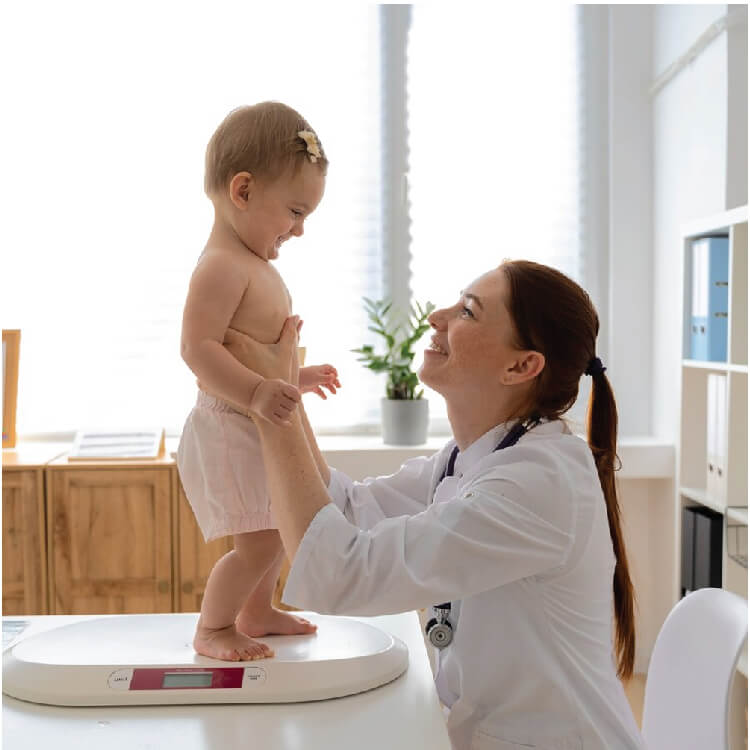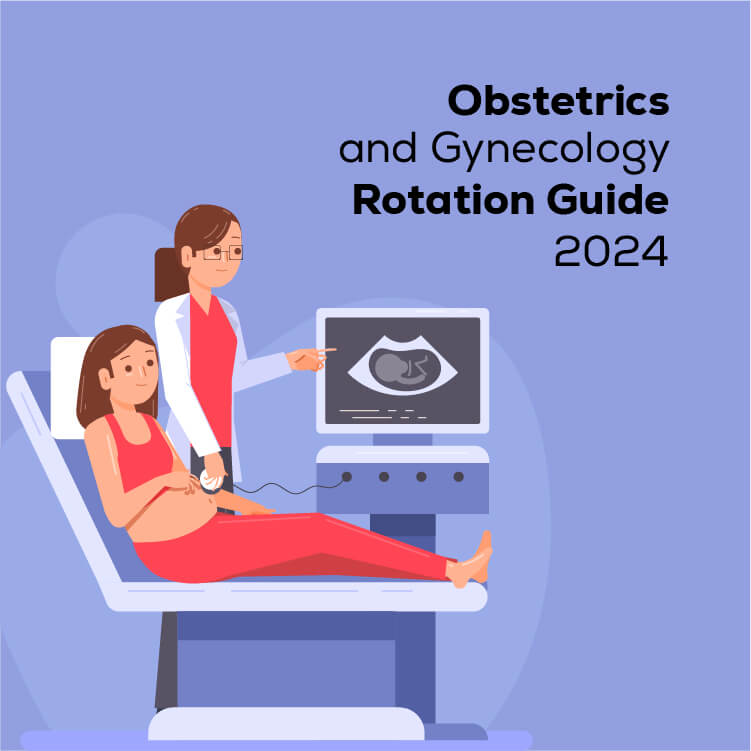
Are you a medical student gearing up for your psychiatry rotation? There are over 3,634 psychiatrists currently employed in the United States. Psychiatry is one of the most rapidly growing professions in the world as the awareness and demand for mental well-being is on the rise. This guide navigates through the depths of psychiatric practice, covering diagnostic criteria, treatment modalities, clinical assessment, and therapeutic interventions. Join us as we unravel the complexities of psychiatry, equipping you with the knowledge and skills essential for success in this field.
What is Psychiatry Rotation?
In essence, a psychiatry rotation in medical education provides students with a structured period to immerse themselves in the field of psychiatry. It helps them in gaining practical experience and understanding in the assessment, diagnosis, and treatment of mental health disorders. Under the guidance of experienced professionals, students engage in diverse clinical activities, including assessments, treatment planning, and psychotherapeutic interventions, across various psychiatric settings. The rotation covers a wide range of psychiatric disorders, fostering competencies in diagnostic skills, therapeutic communication, and cultural competence. Didactic components complement clinical experiences, offering students foundational knowledge in psychiatric theory and treatment modalities.
When Should I Start Applying for the Psychiatry Rotation?
Determining the placement of the psychiatry rotation differs from other rotations. This is because it is often treated as a standalone experience and is typically not positioned strategically alongside other major rotations like Internal Medicine. This contrasts with the common approach seen in rotations like OB/GYN and surgery, where sequencing can significantly impact preparation and exposure to specific medical cultures.
Despite being mentally demanding, psychiatry is often considered one of the easier rotations overall. Opting to place it first can serve as a gradual introduction to clinical clerkships. Additionally, prioritizing it early on can be strategic, as some rotation grades may not factor into important documents like the MSPE/Dean’s letter. Higher grades in an easier rotation can be advantageous.
Psychiatry serves as a unique entry point into medicine and neurology, particularly in outpatient settings. The rotation provides valuable experience with outpatient clinics and note-writing, which can be beneficial for subsequent rotations like Internal Medicine. Another approach is to position psychiatry as a “break rotation,” such as placing it between more intense rotations like Medicine and Surgery, allowing for much-needed rest and rejuvenation for students.
For those considering psychiatry as a specialty, placing the rotation in the middle of the clerkship sequence is advisable. This provides ample time to gain experience in the field, secure a letter of recommendation, and schedule elective rotations in specialized areas like addiction medicine or child psychiatry. However, it’s essential to note that rotation order may be determined by the school’s rotation process, limiting student choice in some cases.

What to Expect from the Psychiatry Rotation?
Here is a comprehensive summary of what to expect from your rotation:
Psychiatry Rotation Structure
Inpatient Setting:
- Varied schedule based on service
- Morning rounds and team discussions
- Dedicated time for note-taking and didactics
- Patient acuity ranges from schizophrenia to major depressive disorder
- Potential for involvement in pre-rounding and team discussions
Outpatient Setting:
- Typical ambulatory medicine schedule
- Longer patient visits with the potential for greater autonomy
- Varied patient presentations, with a focus on follow-ups and diagnostic workups
- Opportunities for new patient evaluations, especially in community health settings
Patient Population and Conditions:
Inpatient Setting:
- High acuity patients with conditions such as schizophrenia, bipolar disorder, and major depressive disorder
- Potential for involuntary admissions and consult requests
- Focus on stabilization and acute management
Outpatient Setting:
- Longitudinal patient care and continuity
- Focus on medication management and psychotherapy
- Opportunities for autonomy in treatment decisions
- Emphasis on diagnostic evaluation and treatment planning
Most Common Psychiatric Conditions
Familiarizing yourself with the diagnostic criteria, symptoms, and treatment approaches for each of these conditions will greatly enhance your learning experience during your psychiatry rotation:
| No. | Psychiatric Condition | Description |
| 1 | Mood Disorders | Characterized by disturbances in mood, such as depression, bipolar disorder, and cyclothymic disorder. |
| 2 | Anxiety Disorders | Conditions marked by excessive fear, worry, or apprehension, including generalized anxiety disorder, panic disorder, and phobias. |
| 3 | Psychotic Disorders | Disorders involving a loss of contact with reality, such as schizophrenia, schizoaffective disorder, and delusional disorder. |
| 4 | Substance Use Disorders | Conditions are characterized by the recurrent use of substances despite adverse consequences, including alcohol, drugs, and opioids. |
| 5 | Personality Disorders | Chronic patterns of behavior and inner experience that deviate significantly from societal norms, such as borderline personality disorder, antisocial personality disorder, and narcissistic personality disorder. |
| 6 | Neurodevelopmental Disorders | Disorders that affect the development of the nervous system, include attention-deficit/hyperactivity disorder (ADHD), autism spectrum disorder (ASD), and intellectual disability. |
| 7 | Eating Disorders | Conditions marked by disturbances in eating behaviors and body image, such as anorexia nervosa, bulimia nervosa, and binge-eating disorder. |
| 8 | Trauma- and Stressor-Related Disorders | Disorders triggered by exposure to traumatic or stressful events, such as post-traumatic stress disorder (PTSD) and acute stress disorder. |
| 9 | Dissociative Disorders | Conditions characterized by disruptions or discontinuities in consciousness, memory, identity, or perception, including dissociative identity disorder and dissociative amnesia. |
| 10 | Obsessive-Compulsive and Related Disorders | Disorders marked by intrusive thoughts, urges, or images, as well as repetitive behaviors or mental acts aimed at reducing distress, such as obsessive-compulsive disorder (OCD), hoarding disorder, and body dysmorphic disorder. |
How to Prepare for the Psychiatry Rotation?
Preparing for your psychiatry rotation requires accessing a variety of resources to ensure a comprehensive understanding of the field. Books for psychiatry rotation, such as The Psychiatry Clerkship Survival Guide, offer invaluable insights and tips tailored specifically for medical students.
Additionally, online platforms like AMBOSS and UWorld provide extensive question banks and clinical vignettes to sharpen your diagnostic skills and clinical reasoning. These resources are essential companions to reinforce your knowledge base and enhance your preparedness for the psychiatry rotation. Remember to prioritize self-care and seek guidance from mentors and peers throughout your preparation journey. By incorporating these psychiatry rotation books and psychiatry rotation resources into your study regimen, you can approach your rotation with confidence and readiness to excel in providing care to patients with mental health concerns. These psychiatry rotation tips can help you perform best.
Psychiatry Rotation Resources to Study
The psychiatry rotation offers a wealth of learning opportunities, and utilizing various resources can significantly enhance your success during the clerkship and shelf exam. Key resources include AMBOSS, Psych articles, Psych shelf QBank, Anki, and AnKing Psychiatry Shelf/Step 2 Tagged cards. Consider supplementing your study materials with Step 1 Psych pharm cards for a comprehensive understanding. While both UWorld and AMBOSS are valuable, it’s unnecessary to complete both question banks. Additionally, take advantage of NBME Psychiatry Practice Exams to assess your progress. The DSM-5 is an indispensable tool, with pocket versions available for easy reference during rounds. For structured review, utilize resources like First Aid Psychiatry, Case Files Psychiatry, and Pre-Test Psychiatry. These resources, along with others, provide a well-rounded approach to mastering psychiatry concepts and excelling on your shelf exam.

How to Clear the Psychiatry Rotation Shelf Exam?
To clear the Psychiatry Rotation Shelf Exam, focus on these key strategies:
1. Understand Exam Format: Familiarize yourself with the exam format, including the types of questions (e.g., multiple-choice, clinical vignettes) and time constraints.
2. Review High-Yield Topics: Prioritize studying high-yield topics such as mood disorders, anxiety disorders, psychotic disorders, substance use disorders, and psychopharmacology.
3. Use Comprehensive Resources: Utilize comprehensive resources like UWorld, AMBOSS, and Psych shelf QBank to practice questions and reinforce your understanding of core concepts.
4. Anki Flashcards: Incorporate Anki flashcards or similar spaced repetition systems to review key facts, diagnostic criteria, and treatment modalities regularly.
5. Practice Clinical Reasoning: Practice clinical reasoning by solving clinical vignettes and applying diagnostic criteria and treatment guidelines to patient scenarios.
6. Review DSM-5 Criteria: Familiarize yourself with the diagnostic criteria outlined in the DSM-5 for various psychiatric disorders, including their specific features and differential diagnoses.
7. Simulate Exam Conditions: Take practice exams under timed conditions to simulate the exam environment and improve time management skills.
8. Seek Feedback: Review incorrect answers and seek feedback from peers, mentors, or online forums to understand areas of weakness and focus your studying efforts.
9. Stay Calm and Confident: Maintain a positive mindset and stay calm during the exam. Trust your preparation and approach each question methodically.
10. Continuously Improve: Identify areas for improvement based on practice exam performance and adjust your study plan accordingly to address weak areas effectively.
Frequently Asked Questions (FAQs)
Away rotations for psychiatry residency offer medical students the opportunity to gain clinical experience at different institutions outside of their home program. These rotations provide exposure to diverse patient populations, treatment modalities, and academic settings, enhancing the student’s overall education and broadening their perspective on psychiatric care.
This is a 3-year psychiatry residency. During this time, residents receive comprehensive training in various subspecialties, clinical settings, and treatment modalities to become competent psychiatrists. This three-year duration allows residents to gain proficiency in diagnosing and managing psychiatric disorders, providing psychotherapy, and collaborating with multidisciplinary teams.
There are numerous psychiatry residency programs across the country, offering a wide range of training opportunities and experiences for aspiring psychiatrists. These programs vary in size, location, and emphasis, allowing residents to tailor their training to their interests and career goals. Prospective residents can explore different programs through the National Resident Matching Program (NRMP) and the Electronic Residency Application Service (ERAS) to find the best fit for their training needs.
A psychiatry rotation typically lasts for two to three months, depending on the medical school curriculum and program requirements. During this rotation, medical students have the opportunity to work alongside psychiatry residents and attending physicians, gaining hands-on experience in assessing and managing patients with psychiatric disorders. Additionally, some rotations may include exposure to related specialties such as neurology, enhancing the student’s understanding of the interface between psychiatry and other medical disciplines
Conclusion
The psychiatry rotation is a pivotal experience for medical students. By prioritizing self-care, utilizing comprehensive study materials, and seeking mentorship, students can approach the rotation with confidence. Embrace each patient encounter as a learning opportunity and remain dedicated to professional growth. With these strategies, students can succeed in their psychiatry rotation and lay a solid foundation for a fulfilling career in psychiatry.



